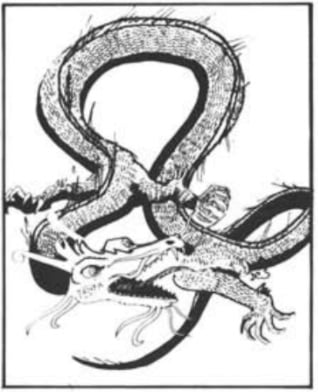- In Oerth: The Touv of Hepmonaland
Yeah, loosely, although I don't think they're (as portrayed in
The Scarlet Brotherhood accessory) meant to parallel any specific African culture closely.
However, David Howery's "The Dark Continent" in Dragon #189 was Hepmonaland in his original campaign, and it does include cultures that are meant to closely parallel specific African peoples.
- ~Central Asian and ~Indigneous Siberian (~Mongolian, ~Central Asian Turkic, and ~Scythian):
- In Oerth: Tiger Nomads and Wolf Nomads
As Scott McMillan pointed out in
this thread, it's likely the Wegwuir (the Wolf Nomads) were named after the
Uyghurs and the Chakyik (the Tiger Nomads) were named after the
Kipchaks.
You could interpret them that way, but Gygax said he based the Flan on Africans. See
his ENWorld Q&A:
I can say that the Flan were not meant to be anything like the American Indians. they were of Hamatic-like racial origin, Negroes if you will. Little is known of them because they were generally absorbed into the waves of other peoples immigrating eastwards through the continent, so their culture was generally lost.
Cheers,
Gary
It's true that the Rovers of the Barrens are closely associated with Plains Indians in David Howery's adventure "Ghost Dance" in Dungeon #32, which coined the name Arapahi for them. The illustrations in particular make this very blatant. But the "Flan in general" are not based on indigenous North Americans (and Gygax gave their leader a title,
ataman, associated with the Cossacks in real life).
- In Oerth: Nippon Dominion [sic!] (not to be confused with "Nippon" as such, which is Oerth's analogue of Japan. Nippon's "Dominion" is presumably a painful Korean analogue.)
We know so little about this region that I don't think we can safely presume anything, including how painful it might be. I understand the logic behind your inference here, but we're talking about an area with a total of one sentence describing it (From the 1996 Dragon Annual: "A protectorate only recently conquered by the warriors of Nippon." Which gives us no cultural detail at all.). The Japanese Empire at its peak in 1942 also included, among many other places, Taiwan, Thailand, Manchuria, and the South Seas Mandate, the latter of which much more closely resembles this "Dominion" geographically than it resembles Korea.
The name "Nippon" sounds like an obvious Japanese analogue, given that it's literally Japan's name, but here we only have a total of two sentences describing it, and the second sentence is "Unsure of the place's real name," so I'm inclined to dismiss the name and consider that geographically the islands are much more similar to Indonesia in their equatorial latitude and proximity to Oerth's India equivalent. Given that the "Celestial Imperium" lacks a western coast, there isn't a good place on Oerth to put an equivalent of Japan or Korea, and I think attempts to give it any are misguided.
- In Ravenloft: Souragne (~French Louisiana)
Note that according to Dragon #349, the domain of Souragne was (apparently) originally part of Oerth's Amedio Jungle.




